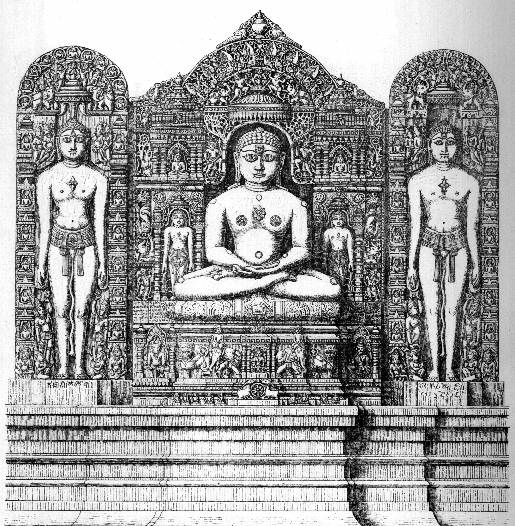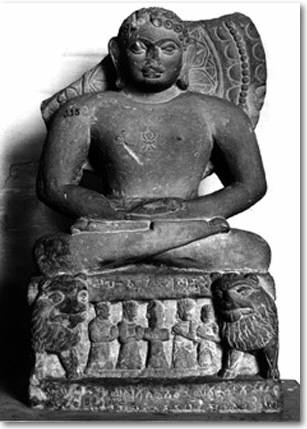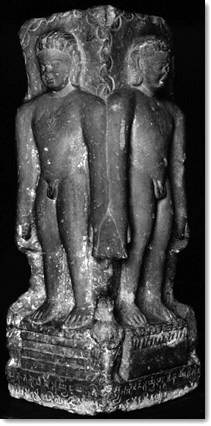Avashyaka V, Kayotsarga
The kayotsarga is a difficult exercise. The monk meditates in a motionless position, the standing position being in the texts obviously preferred to the seated position. In Jaina art, the Tirthankaras are shown standing or seated (illustrations 5-8), and these two types can be linked with the kayotsarga (the standing Tirthankaras at least are unequivocal representations of this pose). In the kayotsarga stance the monk is supposed to practice physical discipline and meditate. There are specifications, but there is no distinct meditation technique (leading to concrete experiences or insights). "Meditation" in Jainism means realization and internalization of important dogmatic subjects but even that is more implied than expressly stated. [Editors note: see Preksha Meditation]
Kayotsarga in the sense of the literary composition deals only to a small extent with kayotsarga exercises. Otherwise it repeats verbatim Avashyaka I and II and introduces sundry matter which is related to Avashyaka II and IV. The description of the kayotsarga exercise runs as follows:
I stand in the kayotsarga... in order to destroy evil karman [arising from former evil acts and leading to rebirth].
My kayotsarga shall be unbroken and unobstructed, except through inhaling and exhaling, coughing and sneezing, yawning and expectoration (? belching?), breaking wind, dizziness and bilious swoon (?), through very slight movements of the limbs (thrill of the hair etc.),... of phlegm (saliva?),... of the eyes (eyelids etc.), through these and other (involuntary) motions.
Until I have concluded (my kayotsarga) through the salutation of the Tirthankaras [tentative translation:] I abandon my body by a standing position, by silence and by meditation, and I also abandon myself.
In the actual description we are again faced with minute details of religious life, in this case with the "physiology" of meditation. It is obvious that the monk is not merely "composed" but engaged in an exercise which must have required training, practice, and willpower. However, in the context of the sixfold Avashyaka-Sutra, the kayotsarga is one element amongst others and a simple combination of position and recitation. The entire exercise lasts for the duration of the "salutation of the Tirthankaras", and this recitation merely helps to concentrate the mind for some time on the Tirthankaras. The ritual has become an abbreviation of the real act. No doubt, the "salutation of the Tirthankaras" is repeated (and thus stands for a reasonable period of time), but even then the reduction is inevitable in the context of the ritual.
|

Illustration 7
Large composition with seated and standing Tirthankaras
(main figures and subsidiary figures).
Patan (former Anahilapattana), Gujarat, ca. 16th-17th century. [3]

Illustration 8
Close up of the lower portion of the central image of illustration 7.
The tiny bull ("bull symbol") in the middle of the cushion identifies the main figure as the Tirthankara Rishabha.[4]
 Prof. Dr. Klaus Bruhn
Prof. Dr. Klaus Bruhn

